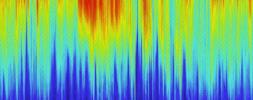The SNMREC Preferred Partner Program is an opportunity for our industry partners to collaborate more fully with the Center. This program is designed to dedicate SNMREC experts and resources to individual industry partner development needs.
Publication TR-12-110
Reference: Delhsen Associates, et al., 2012: Siting Study for a Hydrokinetic Energy Project Located Offshore Southeastern Florida. Final Report, U.S. Department of Energy Contract Number: DE-EE0002655.000, USDOE, Washington, DC. 100pp.
Abstract:The purpose of the project was to enhance the certainty of the survey requirements and regulatory review processes for the purpose of reducing the time, efforts, and costs associated with initial siting efforts of marine and hydrokinetic energy conversion facilities that may be proposed in the Atlantic Ocean offshore Southeast Florida. To secure early input from agencies, protocols were developed for collecting baseline geophysical information and benthic habitat data that can be used by project developers and regulators to make decisions early in the process of determining project location (i.e., the siting process) that avoid or minimize adverse impacts to sensitive marine benthic habitat. It is presumed that such an approach will help facilitate the licensing process for hydrokinetic and other ocean renewable energy projects within the study area and will assist in clarifying the baseline environmental data requirements described in the U.S. Department of the Interior Bureau of Ocean Energy Management, Regulation and Enforcement (formerly Minerals Management Service) final regulations on offshore renewable energy (30 Code of Federal Regulations 285, published April 29, 2009).
Because projects generally seek to avoid or minimize impacts to sensitive marine habitats, it was not the intent of this project to investigate areas that did not appear suitable for the siting of ocean renewable energy projects. Rather, a two-tiered approach was designed with the first step consisting of gaining overall insight about seabed conditions offshore southeastern Florida by conducting a geophysical survey of pre-selected areas with subsequent post-processing and expert data interpretation by geophysicists and experienced marine biologists knowledgeable about the general project area. The second step sought to validate the benthic habitat types interpreted from the geophysical data by conducting benthic video and photographic field surveys of selected habitat types. The goal of this step was to determine the degree of correlation between the habitat types interpreted from the geophysical data and what actually exists on the seafloor based on the benthic video survey logs. This step included spot-checking selected habitat types rather than comprehensive evaluation of the entire area covered by the geophysical survey. It is important to note that non-invasive survey methods were used as part of this study and no devices of any kind were either temporarily or permanently attached to the seabed as part of the work conducted under this project.



